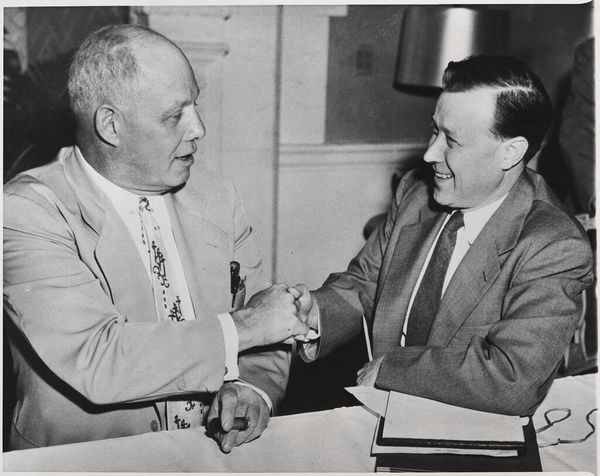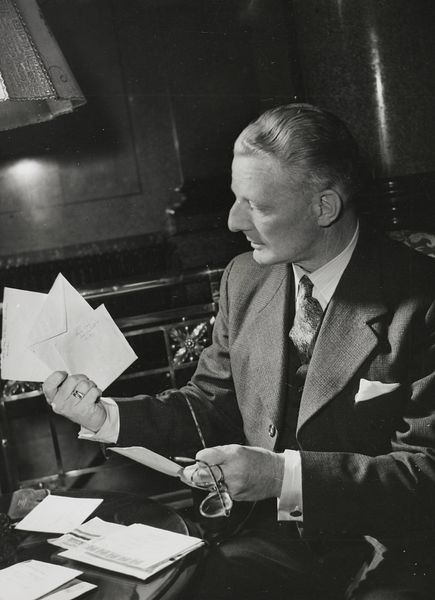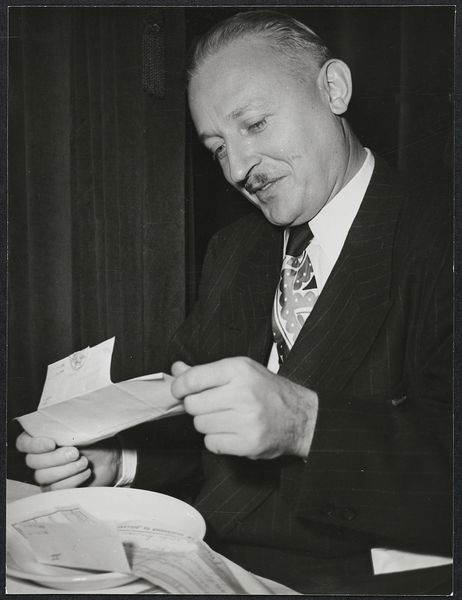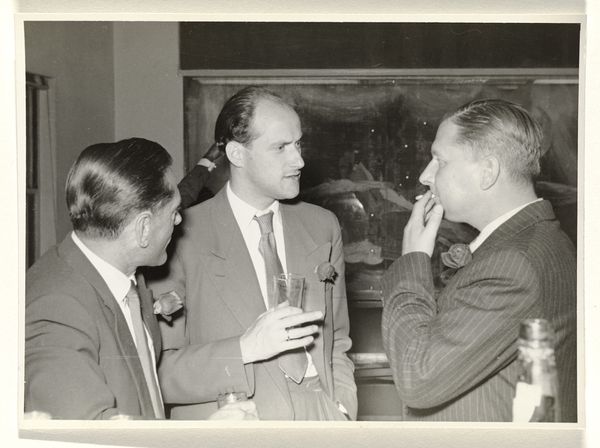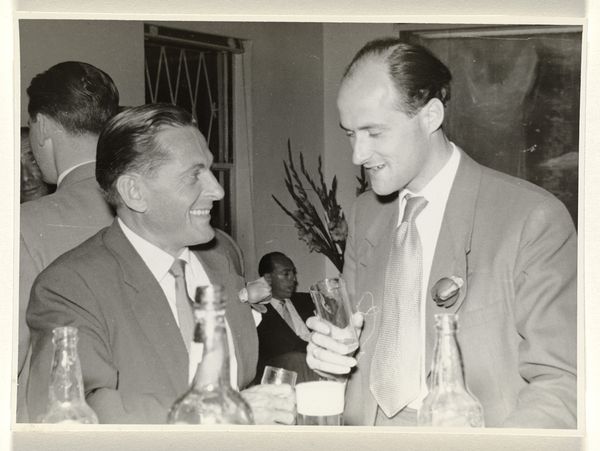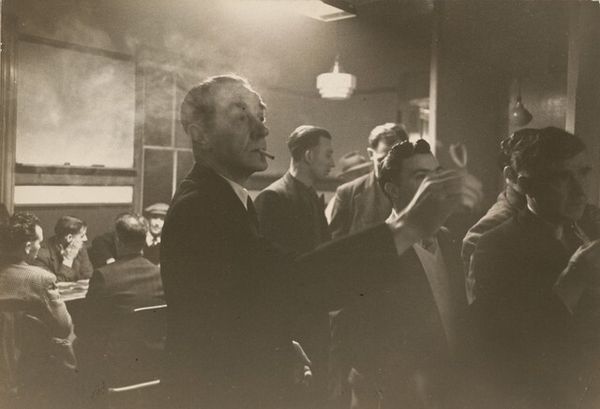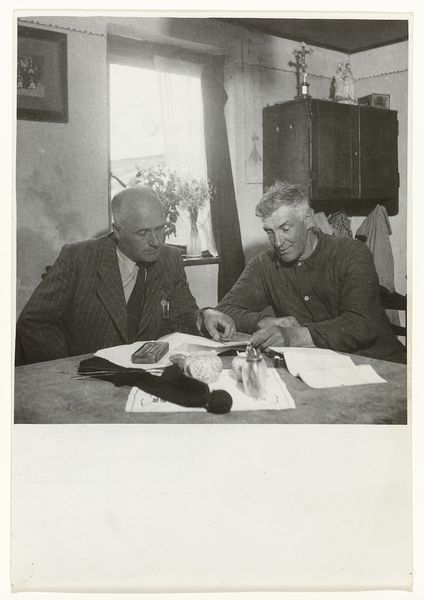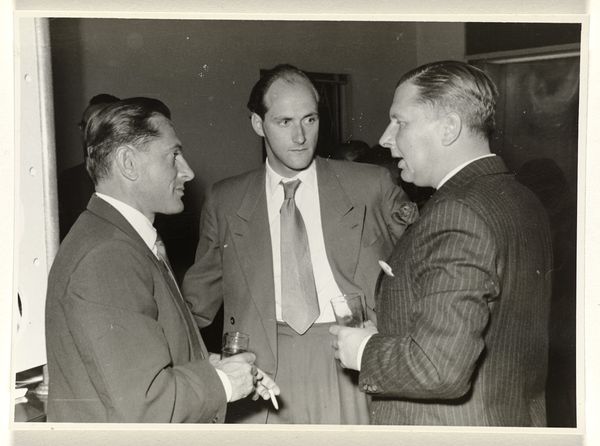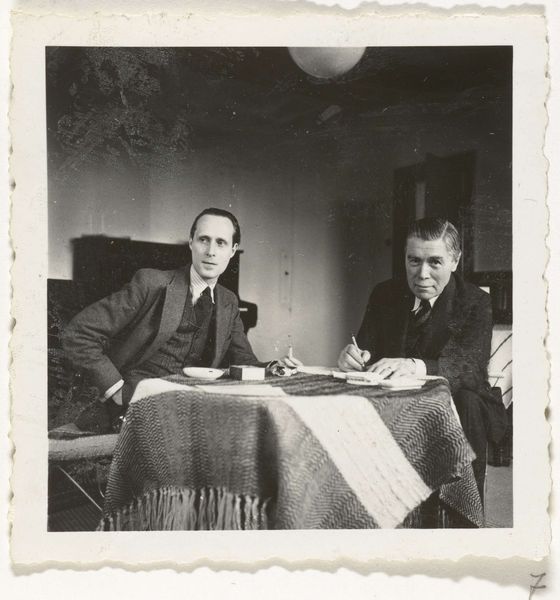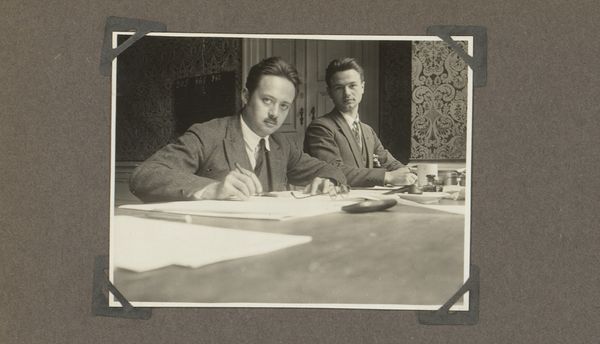
photography, gelatin-silver-print
#
portrait
#
archive photography
#
photography
#
historical photography
#
gelatin-silver-print
#
monochrome photography
#
history-painting
#
monochrome
Dimensions: height 15 cm, width 20 cm
Copyright: Rijks Museum: Open Domain
Curator: This gelatin silver print, potentially dating to 1945, is titled "Proces van Neurenberg: Göring en Von Ribbentrop," attributed to the Keystone Press Agency. What's your initial impression? Editor: Haunting. Something about the mundane setting juxtaposed with the weight of the historical moment. It’s like catching them off-guard, humanizing figures we associate with such immense cruelty. Chilling, really. Curator: Precisely. The photograph seems to capture a moment of unsettling banality. Consider the materials—gelatin silver. This process allowed for mass reproduction, and the image's dissemination shapes public perception of these figures and events. Editor: I keep coming back to Göring's slight smile. It's unnerving. He’s almost…affable? That casualness throws the gravity of the situation into stark relief. The lighting is stark too, reminiscent of something in a documentary, or maybe a noir film, it adds another layer to it. Curator: Indeed. And note the composition—the table acts as a stage, a space for judgment and reflection on accountability and consequence during that moment. There is a lot of raw feeling here, and an intense contrast between the crime and punishment, right? Editor: Right, the individual dishes they have there – the everyday objects in what one would otherwise associate with unspeakable crime. You know, I bet it does change a lot in our perception. I almost feel I shouldn't have these emotions, shouldn't feel sympathy here. Curator: It challenges that clear binary. It forces us to grapple with the uncomfortable truth that individuals, however monstrous their actions, are still, in some fundamental sense, human. And the choices available in constructing an historical memory through print becomes important, the work's power resides in this uneasy tension. Editor: So, what we're left with, after considering the choices the artist made, is the space to contemplate what we should remember of this image – that we as people make choices, we're more than just a binary decision between right and wrong. We have complexity. Curator: Exactly, the medium carries its own historical baggage, and the image captures not only figures, but complex notions of human history being reproduced. Editor: Yes, absolutely! Thank you for pointing those crucial considerations!
Comments
No comments
Be the first to comment and join the conversation on the ultimate creative platform.
